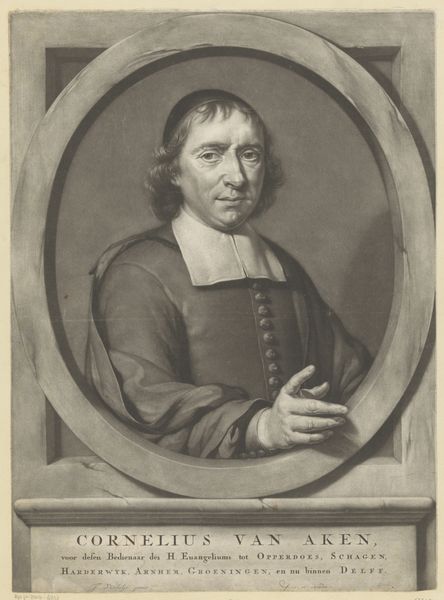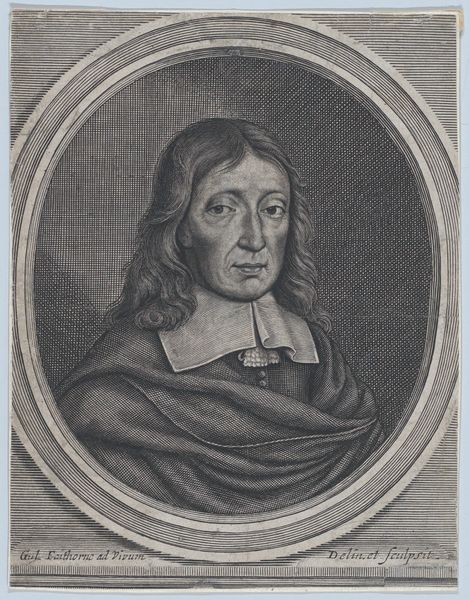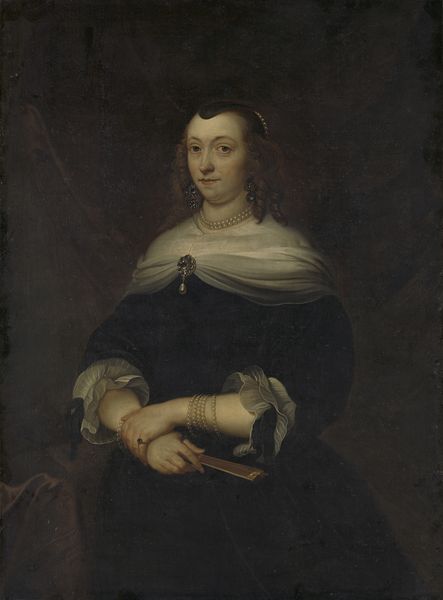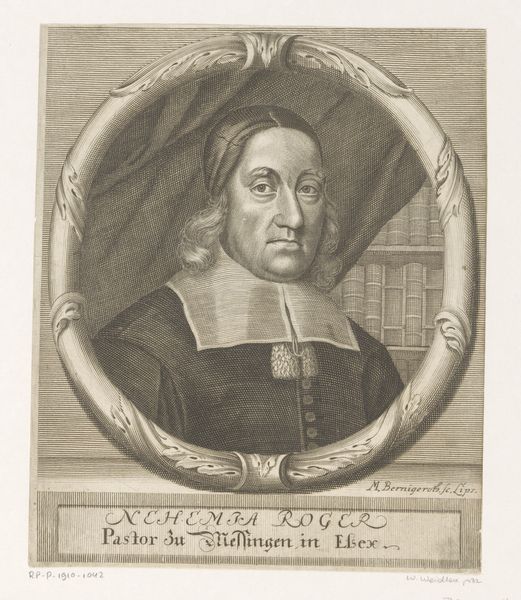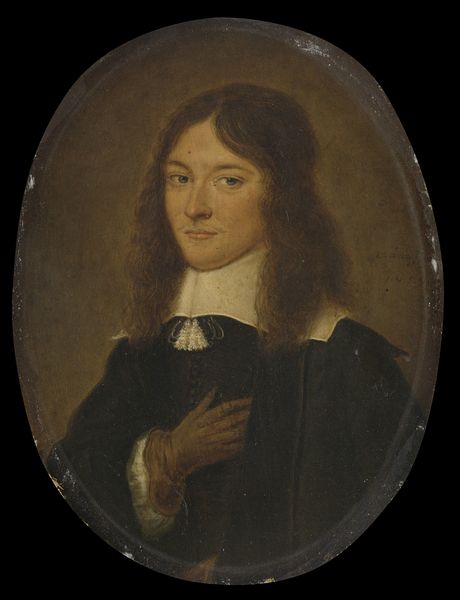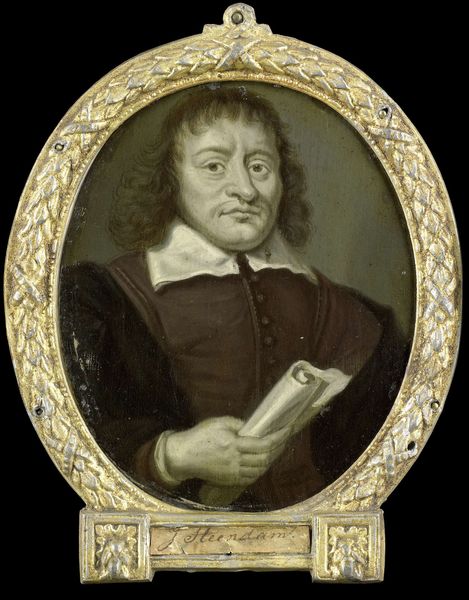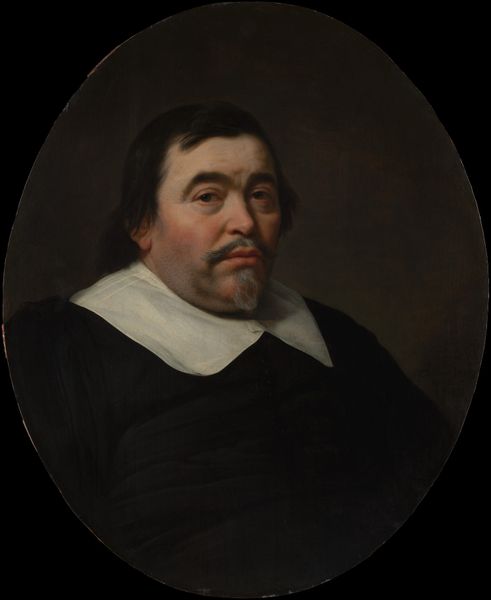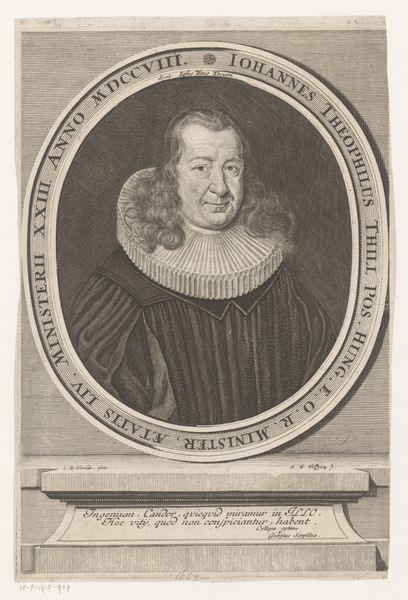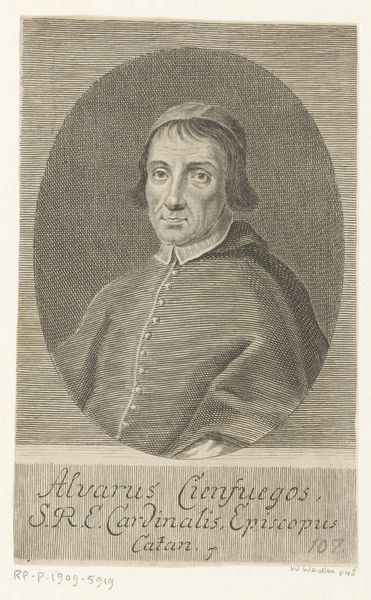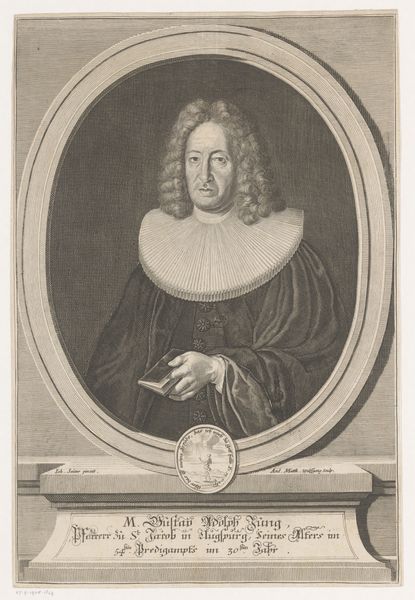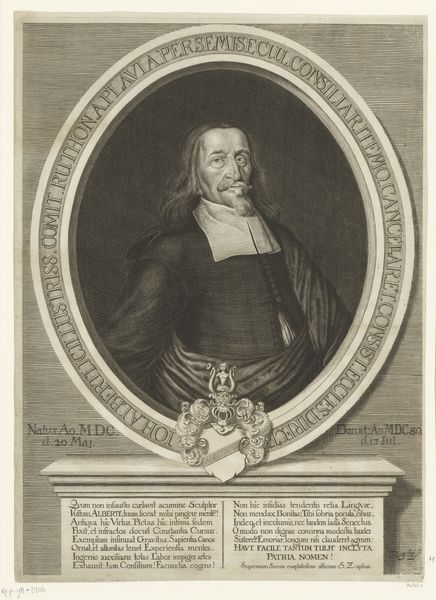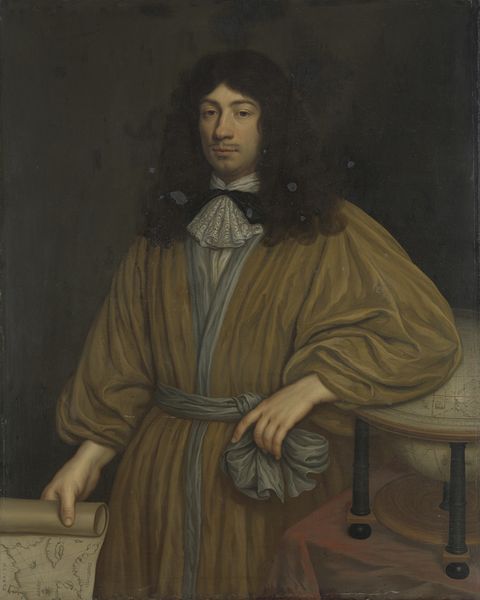
Portrait of Joan Maetsuyker, Governor-General of the Dutch East Indies 1750 - 1800
0:00
0:00
Dimensions: height 33 cm, width 25 cm, depth 3.5 cm
Copyright: Rijks Museum: Open Domain
Editor: This is "Portrait of Joan Maetsuyker, Governor-General of the Dutch East Indies," an oil painting from somewhere between 1750 and 1800 by Jacob Coeman. There's a stillness in the Governor-General's gaze. What can you tell me about the symbolism? Curator: Indeed. The gaze holds power. More generally, portraits are laden with social meaning. Consider his clothing: the black coat, white collar... austere, but declaring status and office. The artist presents him at a low vantage point; you, the viewer, are quite literally looking up to him. The crest contains his values. Does that suggest anything? Editor: Authority, formality, maybe even a bit of intimidation. The crest must be his family's. The whole thing does have a kind of… weight to it, culturally speaking. It makes me curious about how the people under his rule felt about this man, this image. Curator: Exactly! This image perpetuates particular ideas of governance, doesn't it? Reflect on what symbols reinforce established power. Ask yourself what traditions are reinforced or excluded by those same symbols. The white collar against dark fabric -- think of how that image repeats. Can you make associations? Editor: It does give importance to the face. Light and dark contrasts are everywhere; they symbolize opposites perhaps, maybe also highlight the conflict implicit in colonialism? Thanks, I can see many threads now. Curator: Images create meaning long after the subject or even the artist is gone. Now, what modern images invoke similar feelings?
Comments
No comments
Be the first to comment and join the conversation on the ultimate creative platform.

